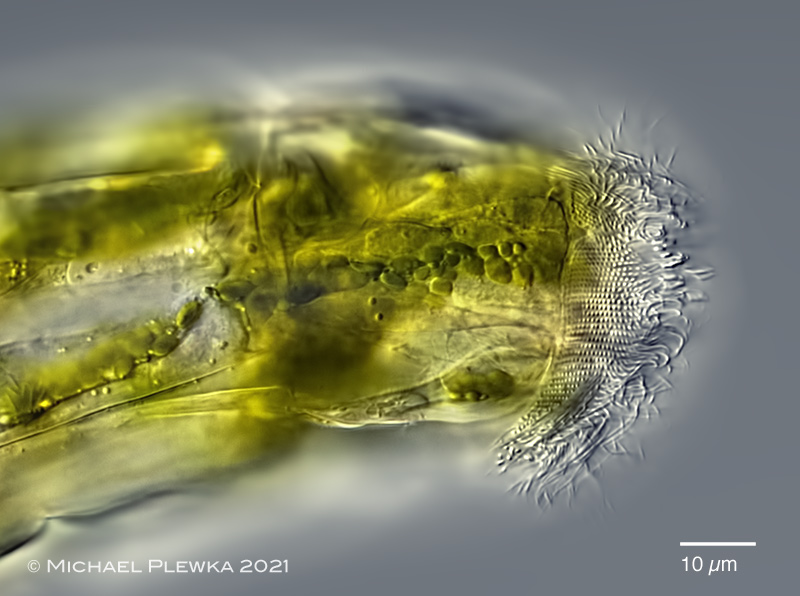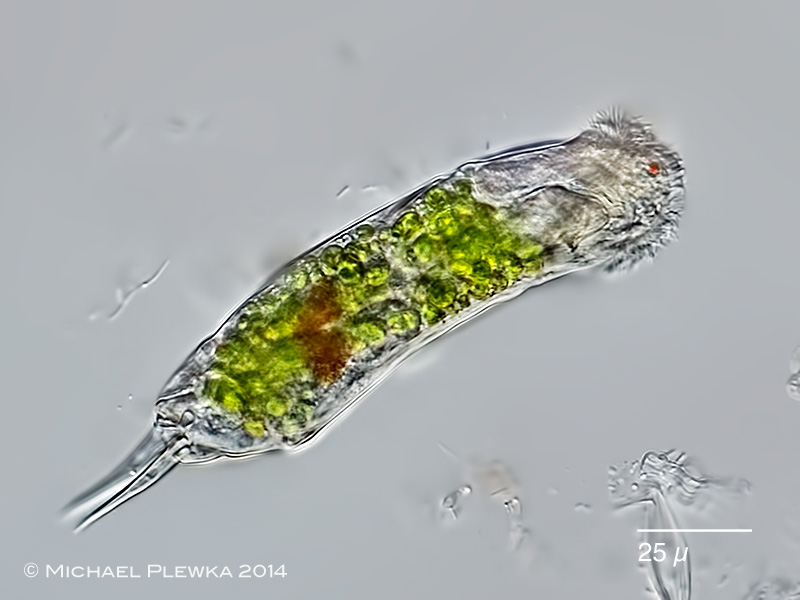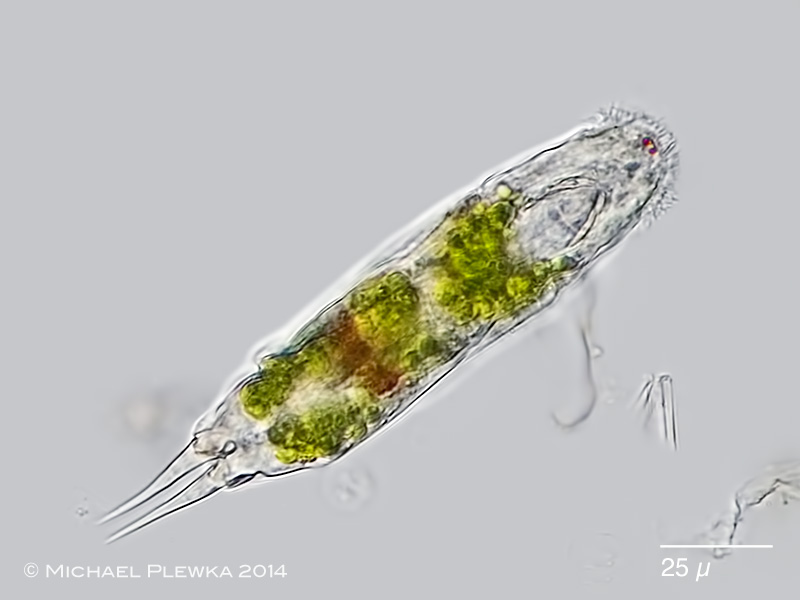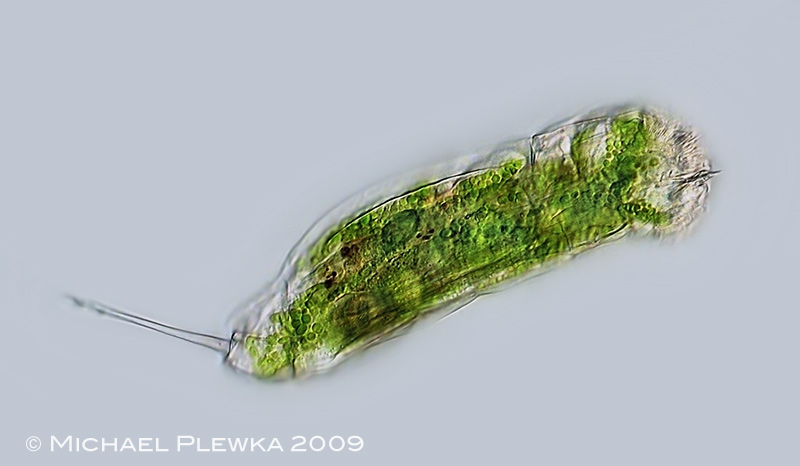Dicranophoroides caudatus; with the conspicuous red frontal eyespots this species might be regarded as a Cephalodella species. But the forcipate mastax makes it clear that it is a dicranophorid rotifer. The special trophi structure (see below images) justifies a new genus for this species: Dicranophoroides (De Smet 1997). This species is also characterised by the presence of zoochlorellae. (3)
Dicranophoroides is one of the few rotifer genera that can host algal cells. Other genera are: Ascomorpha, Itura and Parencentrum. |
| |
 |
| Dicranophoroides caudatus; same specimen, focus plane on the circumapical band (3) |
| |
 |
| Dicranophoroides caudatus; lateral view of specimen from (2) |
| |
 |
| Dicranophoroides caudatus, same specimen, dorsoventral view showing the two frontal eyespots. (2) |
| |
 |
| Dicranophoroides caudatus, compressed specimen from (3) showing the two red eyespots; the green zoochlorellae and some paramylon grains are remnants from the digested diet of euglenid flagellates. |
| |
 |
| Dicranophoroides caudatus, lives at the boundary layer between detritus / mud and the water body of ponds and puddles. Like other Dicranophorids the trophi can be protruded. (1). |
|
| |
|
Dicranophoroides caudatus, forcipate trophi of specimen from (3) Upper images: complete trophi; different focus planes. Lower images: right part of the incus showing the anterior the subbasal chamber (sbC) with 3 subapical teeth and the basal chamber (bC) with 2 inwardly directed teeth. right: right manubrium.
Fu: fulcrum; E: fan-shaped elements of the epipharynx; Ma: manubria, Ra: rami; sbC: subbasal chamber of ramus; bC: basal chamber of ramus; U: uncus.
Images not to scale. (3) |
| |
| Sample (3) courtesy of Dr. Martin Kreutz, Konstanz. |
| |
| |
| Location: Wahner Heide near Cologne, NRW, Germany (1); Paradieswiese, Bezirk Kitzbühel, Austria (2); Simmelried near Konstanz, BW, Germany; Sphagnum-pond (3) |
| Habitat: puddle (1); Spagnum hollow (2); psammon (3) |
| Date: 06.06.2009 (1); 14.10.2014 (2); coll 07/2021, img.: 18.07.2021 (3) |
| |
| |
|
|